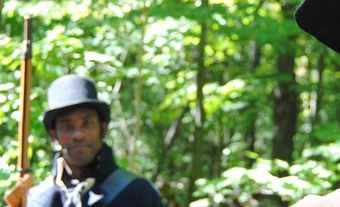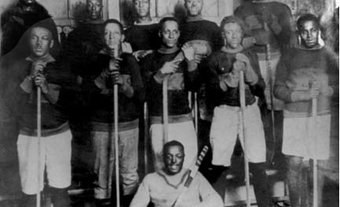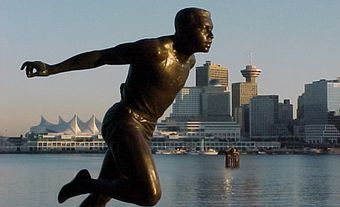Raymond Gray (“Rapid Ray”) Lewis, CM, sprinter (born 8 October 1910 in Hamilton, ON; died 14 November 2003 in Hamilton, ON). Ray Lewis was the first Canadian-born Black athlete to earn an Olympic medal. He won a bronze medal in the 4 x 400 m relay at the 1932 Olympic Summer Games in Los Angeles. He was also part of the Canadian team that won the silver medal in the 4 x 400 m event at the 1934 British Empire Games in London, England. Lewis was made a Member of the Order of Canada in 2000.
Early Life and Career
Ray Lewis was born in Hamilton, Ontario. His grandparents and great-grandparents were former enslaved people who escaped from the United States to Canada. (See Underground Railroad.) As a student at Central Collegiate, Lewis established himself as an elite track and field athlete. He competed in the 100, 200, 400 and 800 yard sprints. He won a total of 17 national high school championships.
Lewis tried out and qualified for the 1928 Canadian Olympic team. He finished fourth in the 400 m race at the Canadian trials. He did not ultimately join the team; he was replaced by a White athlete. It was one of countless experiences that reminded Lewis of his roots and of the racism toward Black Canadians at the time. In his 1999 autobiography, Shadow Running, Lewis recalls watching a Ku Klux Klan cross burn across the street from his Hamilton home for two days straight.
In 1929, Lewis’s running abilities earned him a scholarship to Marquette University in Milwaukee, Wisconsin. He returned to Canada after one semester, finding work with Canadian Pacific Railway as a sleeping car porter. However, he never stopped training. In those days, Lewis could often be found sprinting parallel to the railway tracks, racing his shadow.
Olympics
Lewis competed at Canadian trials for the 1932 Olympic Summer Games in Los Angeles. He sacrificed one month’s wages at his railway job for the opportunity to qualify for Canada’s team.
His first race at the Los Angeles Games was in the 400 m dash. In a qualifying heat, Lewis finished with a time of 50.7 seconds. In the quarter-finals, he improved his time, finishing the heat in 49.1 seconds, but he failed to advance to the next round.
Lewis found redemption in the 4 x 400 m relay with his teammates Jimmy Ball, Phil Edwards and Alex Wilson. They ran the medal race in a time of 3:12.8 and finished third behind the United States and Great Britain, earning bronze. The accomplishment made Lewis the first Canadian-born Black athlete to ever medal at an Olympic Games. (His teammate, Edwards — a Black athlete who also medalled for Canada at the 1928 Olympics — was born in British Guyana.)
At the 1934 British Empire Games in London, England, Lewis was part of a Canadian team that won the silver medal in the 4 x 400 m event (also called the one-mile relay). Lewis set his sights on the 1936 Olympic Summer Games in Berlin. But he was sidelined with debilitating shin splints that ultimately forced him to cut his career short.
Legacy
The Hamilton Black History Committee awards the Raymond G. Lewis Sports Leadership Scholarship “to the individual who has accomplished significant achievements in Sports Leadership.” In 2000, 68 years after his historic Olympic bronze, Lewis was made a Member of the Order of Canada. John Cooper’s Rapid Ray: The Story of Ray Lewis, a children’s book that tells the story of Lewis’s upbringing and his rise to the Olympics, was published in 2002. That year, Lewis also received the Queen Elizabeth II Golden Jubilee Medal.
Lewis died on 14 November 2003, four weeks after a sustaining a fall. He was 93 years old and survived by his wife of 63 years, Vivienne. Following his death, a Hamilton elementary school and a local track and field centre were named in his honour.
See also Trailblazing Black Canadian Athletes.

 Share on Facebook
Share on Facebook Share on X
Share on X Share by Email
Share by Email Share on Google Classroom
Share on Google Classroom






